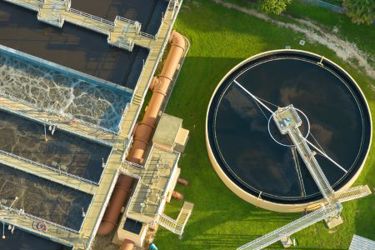What Private Utilities Need to Know About Nutrient Loading and Eutrophication

For private utilities serving resorts, golf courses, residential communities, or mixed-use developments, wastewater discharge often flows into small, sensitive water bodies—places where nutrient overload can trigger eutrophication and rapid ecological decline. Excess nitrogen and phosphorus fuel harmful algae blooms, depleting oxygen, killing fish, and creating odor and aesthetic issues that can damage property values, invite regulatory crackdowns, and increase operating costs. Traditional extended aeration or older conventional activated sludge (CAS) systems rarely meet today’s strict nutrient limits, making Biological Nutrient Removal (BNR) essential.
BNR uses specialized microbes to convert ammonia to nitrogen gas and remove phosphorus biologically, reducing chemical reliance. Membrane Bioreactor (MBR) systems excel in this process, offering high MLSS levels, no clarifier limitations, and tight process control—supporting stable nitrification and denitrification even in cold or seasonal conditions. The result: consistent effluent quality below 3 mg/L total nitrogen and 0.3 mg/L total phosphorus, protecting fragile receiving waters and safeguarding permits.
For small discharges into creeks or ponds, there’s little room for error. MBR-based BNR retrofits not only ensure compliance but also protect the natural assets that define a development’s value—offering operational stability, reduced solids handling, and future-proofed nutrient control.
Get unlimited access to:
Enter your credentials below to log in. Not yet a member of Water Online? Subscribe today.
